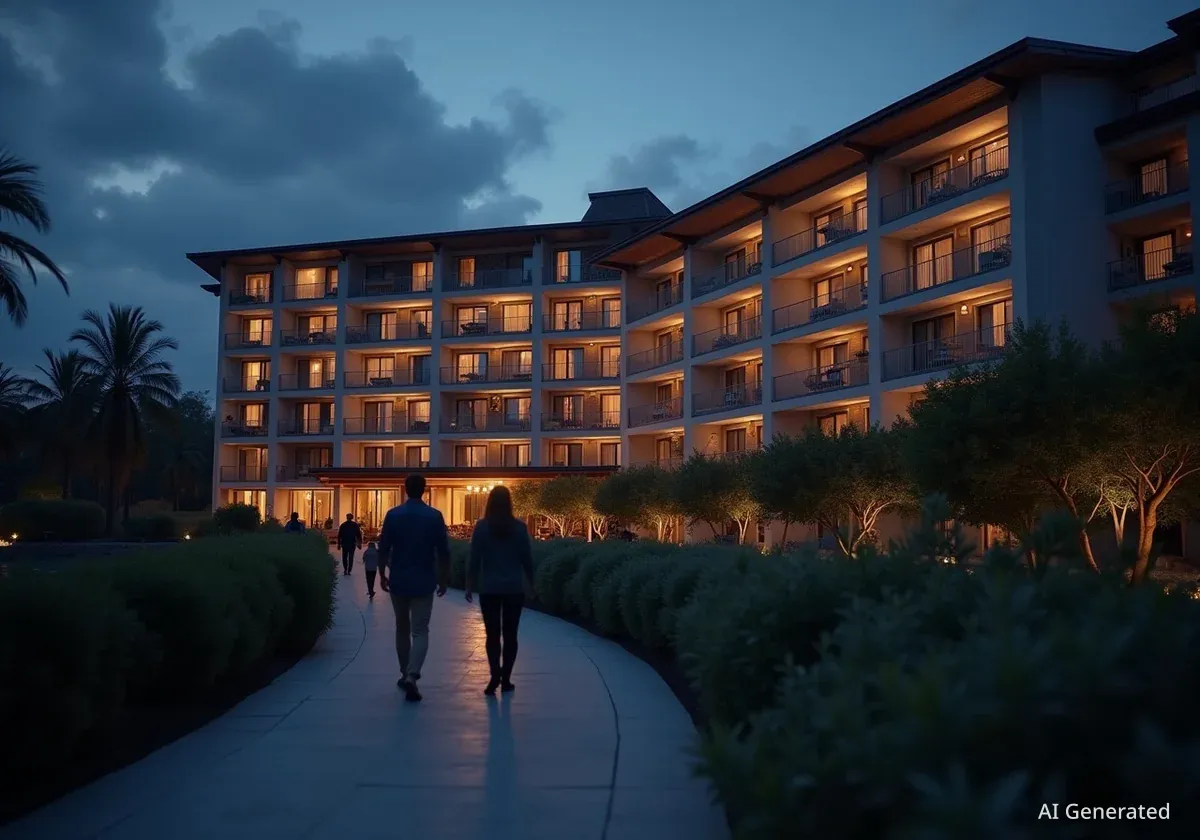A United Airlines flight traveling from Denver to Los Angeles on Thursday, October 16, 2025, diverted to Salt Lake City International Airport. The reason given was a crack in one layer of the aircraft's windshield. This incident has led to speculation about the cause, including the possibility of space debris.
United Flight 1093, a Boeing 737 MAX 8 with registration N17327, was carrying 140 passengers at the time of the diversion. The aircraft was cruising at an altitude of 36,000 feet when the crew noticed the damage.
Key Takeaways
- United Flight 1093 diverted to Salt Lake City due to a cracked windshield.
- The aircraft was a Boeing 737 MAX 8 carrying 140 passengers.
- Speculation about space debris arose from an unconfirmed photo showing potential scorch marks.
- A cracked windshield is a known, though uncommon, in-service failure in aviation.
- Official reports have not confirmed the cause, with thermal stress being a likely explanation.
Flight Details and Immediate Response
The flight departed from Denver International Airport (DEN) with its destination as Los Angeles International Airport (LAX). Approximately one hour into the flight, the crew reported the issue with the cockpit window.
Upon notification of the diversion, emergency services, including fire department personnel, were on standby at Salt Lake City International Airport (SLC) as a precaution. This is standard procedure for any aircraft reporting a potential issue.
"The airline reported that flight 1093 made the decision to address a crack in one layer of its windshield."
Passengers on board were later transferred to a different aircraft to continue their journey to Los Angeles. This replacement flight arrived approximately six hours behind its original schedule.
Fact Check
- Aircraft Model: Boeing 737 MAX 8
- Registration: N17327
- Passengers: 140
- Cruising Altitude: 36,000 feet
- Route: Denver (DEN) to Los Angeles (LAX)
- Diversion Airport: Salt Lake City (SLC)
Analyzing the Windshield Damage
Modern airliner windshields are complex structures. They are typically laminated, multi-ply, and electrically heated. This design ensures that the aircraft can maintain pressurization and withstand impacts even if one layer fails.
A photo circulating on social media, shared by aviation watchdog JonNYC, showed the cockpit window with what appeared to be scorch marks. This image, though unconfirmed, fueled initial theories about a space debris or meteorite impact.
Potential Causes of Windshield Cracks
A crack in one layer of a multi-ply windshield is a known occurrence in aviation. Several factors can contribute to such an event:
- Thermal Stress: A fault in the windshield heating system or its connectors can lead to localized overheating. This thermal stress can cause a ply to crack and may leave heat discoloration or 'scorchy' marks.
- Temperature Gradients: Routine thermal and structural cracks can occur due to significant temperature differences and residual stresses within the material. This is considered a normal in-service failure.
- Impact: While less likely at 36,000 feet, impacts from birds or hail are common causes of windshield damage at lower altitudes. However, the description of the damage as a 'ply crack' rather than a penetration suggests an internal failure.
Aviation Context
When a windshield ply cracks, standard procedure requires the flight crew to descend to a lower altitude. This reduces pressure differentials across the window. They also manage the heating system and divert to a suitable airport for inspection and repairs. The descent from 36,000 feet by United Flight 1093 aligns with these established protocols.
The Space Debris Theory
The suggestion of space debris hitting the aircraft gained traction after the unconfirmed photo with scorch marks was widely shared. However, aviation experts generally consider this an unlikely scenario.
According to a 2023 FAA report, the annual chance of falling space debris causing a single global aviation casualty is estimated at 0.1 percent. This translates to an individual passenger risk of less than one in a trillion, though this risk is projected to increase over time.
For space launches and re-entries, the FAA uses specific Debris Response Areas and Aircraft Hazard Areas. These zones are designed to keep aircraft away from potential debris hazards, aiming for a risk level of one in a million.
Historical Precedent and Likelihood
Records show no confirmed instances of a commercial airliner being struck by space debris. Discussions among aviation professionals often note the absence of any documented cases.
Given the available information, the most probable explanation for the United flight's windshield damage points to an internal issue. A malfunction within the windshield heat system causing localized arcing and scorch marks is a more plausible scenario than an impact from space debris.
It is important to note that cracked windshield diversions are not uncommon in the airline industry. Several such incidents occurred last year involving major airlines like United, American, and Alaska. For example, a Delta A330-200 returned to London earlier this summer due to a similar windshield crack.
Current Status of the Aircraft
As of more than a day after the incident, the Boeing 737 MAX 8 (N17327) that diverted remains on the ground at Salt Lake City International Airport. It is undergoing inspection and repairs before it can be returned to service.
Investigations into the exact cause of the windshield crack will continue. These investigations typically involve examining the damaged ply, checking the heating system, and reviewing flight data recorders.
While the idea of a space debris impact is compelling, the evidence and historical data suggest that internal system failures or thermal stress are more common causes for such incidents in commercial aviation.





